Utah is a backpacker’s paradise. With its stunning natural scenery, diverse terrain, and countless hiking trails, it offers an incredible outdoor experience for backpackers of all levels. Whether you’re looking for a short day hike or an overnight adventure, Utah has it all.
Backpacking in Utah provides an opportunity to explore the state’s rugged wilderness, from the towering peaks of the Wasatch Mountains to the iconic red rocks of Moab.
Contents
It’s a chance to disconnect from the world and immerse oneself in nature, all while enjoying the physical and mental benefits of hiking.
For those seeking an adventure of a lifetime, Utah’s diverse landscape and abundance of backpacking trails are beckoning.
Here’s a closer look at what makes backpacking in Utah an unforgettable experience.
Key Takeaways:
- Utah is a backpacker’s paradise with stunning natural scenery and diverse terrain.
- There are countless hiking trails for backpackers of all levels.
- Backpacking in Utah provides an opportunity to disconnect and immerse oneself in nature.
- Utah’s diverse landscape and abundance of backpacking trails make it an unforgettable experience.
- Backpacking in Utah offers physical and mental health benefits.
Exploring Utah’s Backcountry Trails
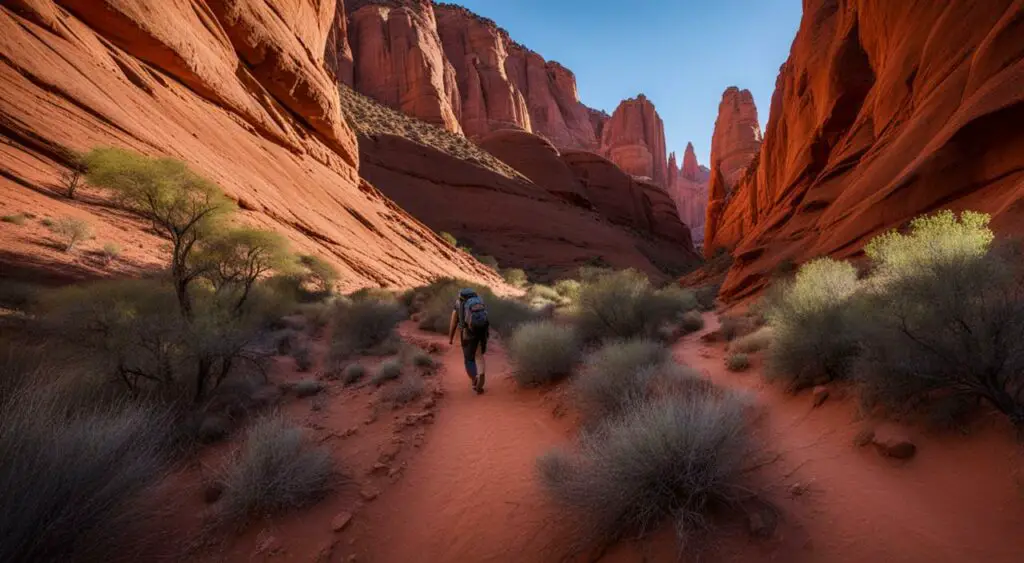
Utah boasts an extensive network of backpacking trails that provide opportunities for adventurers of all skill levels.
From day hikes to multi-day treks, backpackers can explore the diverse landscapes of the state, including canyons, mountains, and deserts.
Trails
There are numerous backpacking trails in Utah that offer stunning vistas and unique experiences. Some notable trails include:
- The Zion Narrows: This 16-mile trail follows the Virgin River through a narrow slot canyon, offering breathtaking views and challenging terrain.
- The High Uintas Wilderness: This expansive wilderness area in northeastern Utah boasts over 500 miles of trails, including the popular Kings Peak Trail.
- The Grand Staircase-Escalante National Monument: This vast wilderness area in southern Utah features a variety of backpacking trails, including the popular Coyote Gulch Trail.
Backpacking Trips
Backpacking trips in Utah offer a chance to explore the state’s natural beauty and rugged terrain.
Multi-day trips can provide a deeper immersion in the wilderness and allow for more extensive exploration of the terrain.
Some popular backpacking trips in Utah include:
- The Hayduke Trail: This 800-mile trail runs through some of the most remote and rugged landscapes in Utah, including Canyonlands National Park and the Grand Canyon.
- The Uinta Highline Trail: This stunning 104-mile trail runs through the High Uintas Wilderness and offers breathtaking views of the surrounding mountains and alpine lakes.
- The Trans-Zion Trek: This 50-mile trek traverses Zion National Park and offers stunning views of the park’s iconic sandstone formations and canyons.
Backpacking Trails Utah
Utah’s diverse landscapes offer a wide range of backpacking trails for outdoor enthusiasts.
The state’s mountain ranges, canyons, and deserts all provide unique opportunities for exploration and adventure.
Some popular backpacking trails in Utah include:
| Trail | Length | Difficulty | Highlights |
|---|---|---|---|
| The Narrows | 16 miles | Difficult | Slot canyon, Virgin River |
| Kings Peak Trail | 28 miles | Moderate | Uinta Mountains, King’s Peak summit |
| Coyote Gulch Trail | 11 miles | Moderate | Escalante River, natural arches |
Whether backpackers are seeking a challenging trek through the mountains or a leisurely hike through a scenic canyon, Utah’s backcountry trails offer a wealth of opportunities for adventure and exploration.
Backpacking Utah’s National Parks
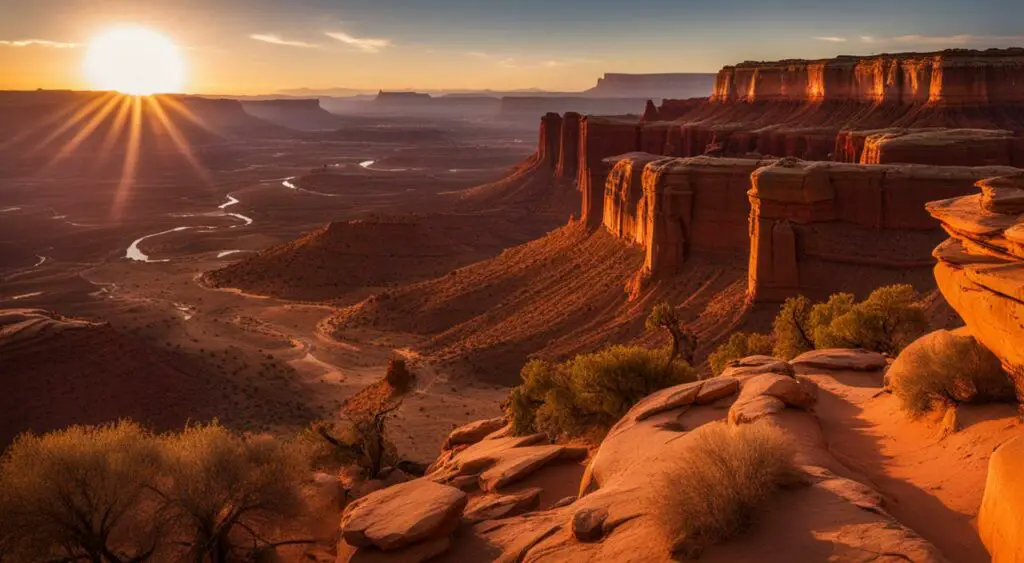
Backpacking in Utah’s national parks is a unique and unforgettable experience that allows hikers to immerse themselves in the stunning natural beauty of the region.
One of the most popular destinations for backpackers is Canyonlands National Park, which features over 500 miles of trails that wind through towering cliffs, meandering canyons, and jagged rock formations.
The national park offers backpackers numerous opportunities to explore its diverse landscapes, from the Island in the Sky mesa to the remote and rugged backcountry regions.
The park features four distinct districts: Island in the Sky, the Needles, the Maze, and the rivers, each with their unique trails and backpacking opportunities.
Backpacking in national parks requires careful planning and preparation, as permits are required for overnight stays, and certain areas may be closed due to weather conditions or conservation efforts.
Additionally, hikers are expected to follow Leave No Trace principles to minimize their impact on the environment and preserve the natural beauty of the parks for future generations.
“Canyonlands National Park is incredibly diverse. The different districts all offer unique backcountry experiences and trails, from easy day hikes to challenging multi-day backpacking trips.” – Ranger John Smith
Other National Parks in Utah
Aside from Canyonlands National Park, Utah is home to several other national parks that offer backpacking opportunities.
Arches National Park features over 2,000 natural arches, and backpackers can explore the park’s backcountry areas on several multi-day trips.
Zion National Park, located in southern Utah, is known for its towering sandstone cliffs and narrow slot canyons, which make for challenging backpacking adventures.
Overnight Backpacking Adventures in Southern Utah
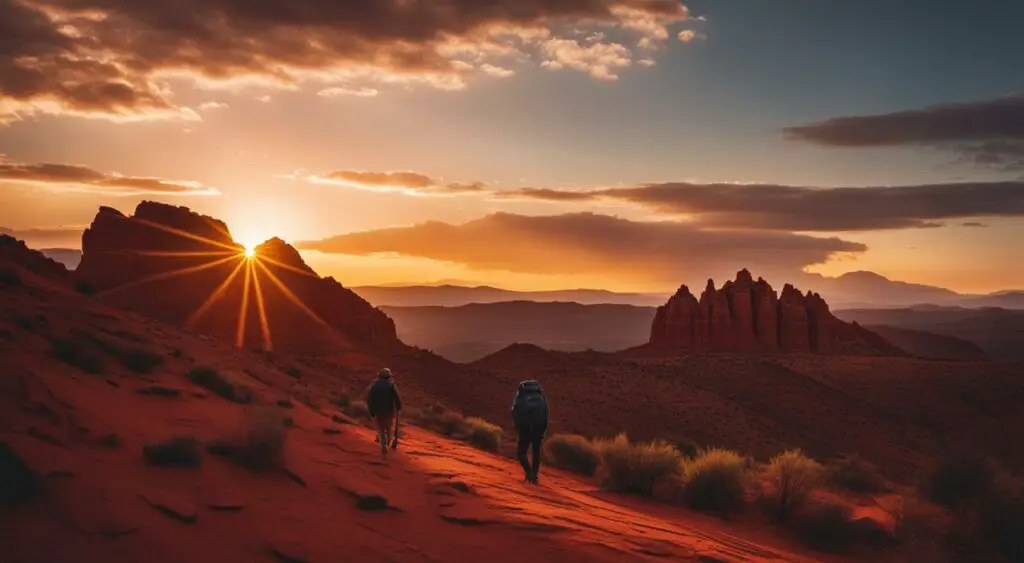
When it comes to hiking and backpacking in Utah, Southern Utah offers some of the most captivating natural beauty and diverse trail options in the state.
From the towering red rock formations of Bryce Canyon National Park to the otherworldly landscapes of Zion National Park, backpackers will encounter a range of unique experiences and environments.
Hiking through Southern Utah also provides the opportunity to explore some of the state’s less-traversed areas, allowing backpackers to discover hidden gems and secluded trails.
With its stunning scenery and relatively moderate climate, Southern Utah is an ideal destination for backpacking trips throughout the year, but especially during the spring and autumn months.
The Top Overnight Backpacking Spots in Southern Utah
From the sweeping landscapes of the Grand Staircase-Escalante National Monument to the slot canyons of the Paria Canyon-Vermilion Cliffs Wilderness, Southern Utah boasts a diverse range of backpacking trails and experiences.
Here are some of the top overnight backpacking spots in the region:
| Trail Name | Location | Distance | Difficulty |
|---|---|---|---|
| The Narrows | Zion National Park | 16 miles round-trip | Moderate |
| The Subway | Zion National Park | 9 miles point-to-point | Strenuous |
| Coyote Gulch | Grand Staircase-Escalante National Monument | 11 miles point-to-point | Moderate |
| Buckskin Gulch | Paria Canyon-Vermilion Cliffs Wilderness | 20 miles point-to-point | Strenuous |
Each of these trails offers breathtaking scenery and unique experiences, but they also require careful planning and preparation.
Backpackers should be aware of the terrain, climate, and potential hazards of each trail before embarking on their journey.
Backpacking Tips for Southern Utah
Before setting out on a backpacking trip in Southern Utah, it’s important to be prepared for the challenges that this diverse terrain can present.
Here are some backpacking tips to keep in mind:
- Check weather conditions and pack accordingly, as temperatures can vary significantly throughout the day and night.
- Carry plenty of water and plan water sources carefully, as water availability can be limited in some areas.
- Be aware of potential hazards, such as flash floods and rockfall, and plan accordingly.
- Leave no trace and respect the natural environment by properly disposing of waste and avoiding damaging flora and fauna.
Trekking Through Northern Utah’s Natural Beauty
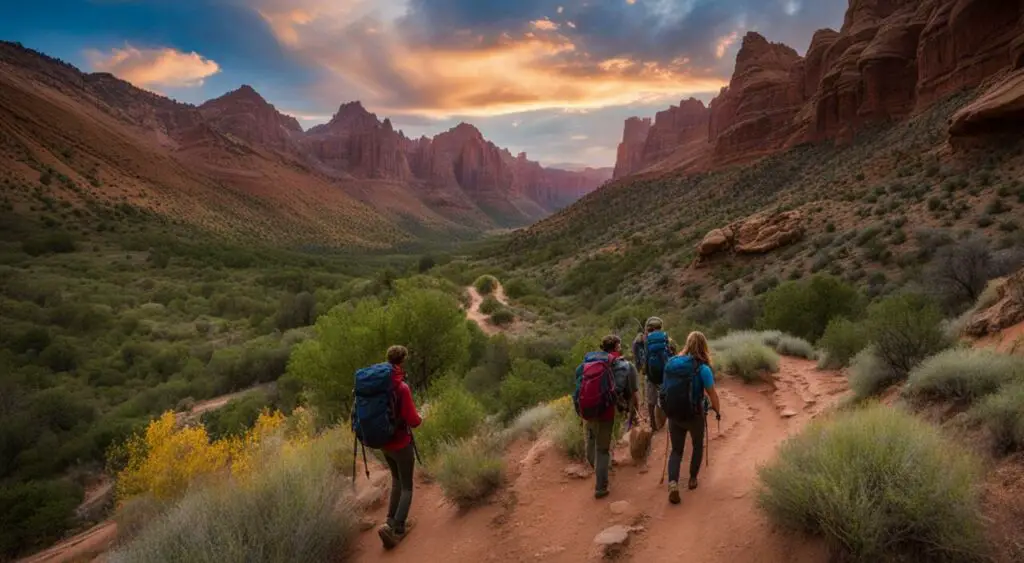
Northern Utah offers backpackers some of the most spectacular and diverse landscapes in the state.
From rugged mountain ranges to tranquil lakes and rivers, there’s something for every outdoor enthusiast in this region.
One of the top backpacking destinations in Northern Utah is the Uinta Mountains.
This stunning range features beautiful alpine lakes, rolling meadows, and rugged peaks, making it a favorite among hikers and backpackers alike.
With over 400 miles of trails to explore, there’s no shortage of adventure to be had in the Uintas.
For those seeking a more challenging backpacking experience, the Highline Trail in the Wasatch Range is a must.
This 104-mile trail winds through some of Utah’s most dramatic mountain landscapes, with steep ascents and descents that reward hikers with breathtaking views at every turn.
Northern Utah is also home to several national forests, including the Ashley National Forest and the Cache National Forest.
These forests offer a wide variety of backpacking trails and camping opportunities, as well as spectacular scenery and wildlife viewing.
Additional Backpacking Destinations in Northern Utah
– Logan Canyon
– Ogden Valley
– Antelope Island State Park
– Bear River Range
No matter where you choose to backpack in Northern Utah, you’re sure to be surrounded by natural beauty and adventure at every turn.
Unforgettable Backpacking Trips Near Salt Lake City
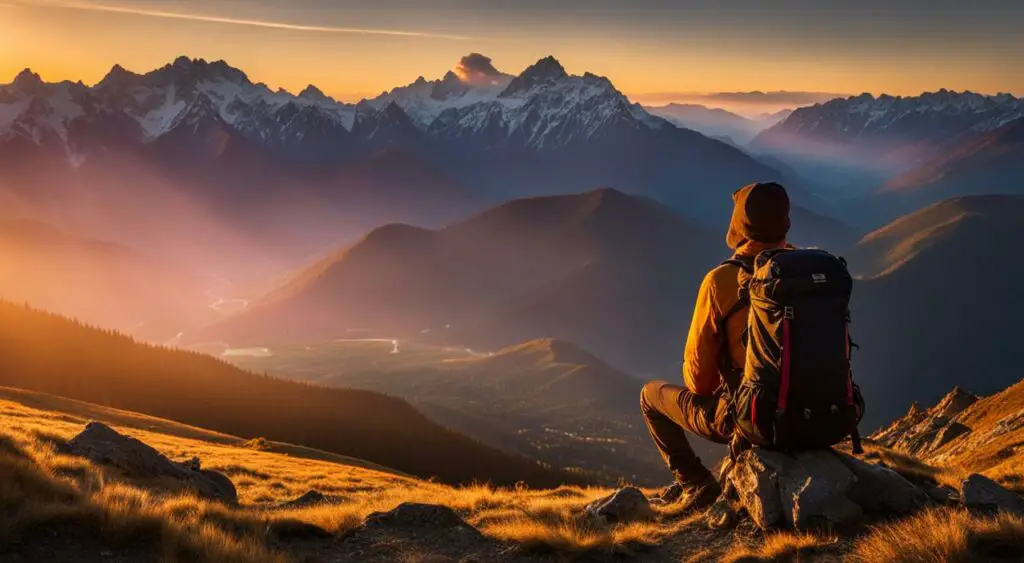
Salt Lake City is a gateway to some of the most unforgettable backpacking trips in the state of Utah.
Whether one is a seasoned backpacker or a beginner, there are plenty of overnight backpacking trips and backpacking trails within Utah County that await exploration.
One of the most popular overnight backpacking trips near Salt Lake City is the Lone Peak Wilderness Area.
This area offers a variety of trails that vary in length and difficulty, providing options for backpackers of all skill levels.
The Lone Peak Trail is a 6.2-mile trail that takes backpackers through rugged mountain terrain and past stunning alpine lakes.
For those seeking a longer and more challenging trek, the Jacob’s Ladder Trail is a 14.6-mile point-to-point trail that provides stunning views of the Wasatch Range.
Another option for backpackers near Salt Lake City is the Timpanogos Wilderness Area.
This area is home to Mount Timpanogos, a peak that rises over 11,000 feet and provides backpackers with breathtaking views of the surrounding mountains.
The Timpanogos Trail is a 14.4-mile trail that takes backpackers through wildflower-filled meadows, past rushing mountain streams, and up to the summit of Mount Timpanogos.
| Trail Name | Distance | Difficulty |
|---|---|---|
| Lone Peak Trail | 6.2 miles | Intermediate |
| Jacob’s Ladder Trail | 14.6 miles | Difficult |
| Timpanogos Trail | 14.4 miles | Difficult |
For backpackers seeking a more unique experience, the Squaw Peak Trail in Provo Canyon offers stunning views of the Utah Valley and the nearby Wasatch Range.
This trail is 6.4 miles long and is known for its wildflowers and beautiful scenery.
Backpackers can also explore the Dry Creek Trail, a 6.4-mile trail that winds through dense forest and provides access to stunning mountain vistas.
Before embarking on any overnight backpacking trips near Salt Lake City, it is important to ensure that one has the necessary gear and knowledge to stay safe and comfortable during the journey.
Backpackers should bring a map, compass, plenty of water, and appropriate clothing for the weather conditions.
It is also important to follow Leave No Trace principles and to practice responsible camping and hiking habits.
The Majestic Beauty of Utah’s Mountain Ranges
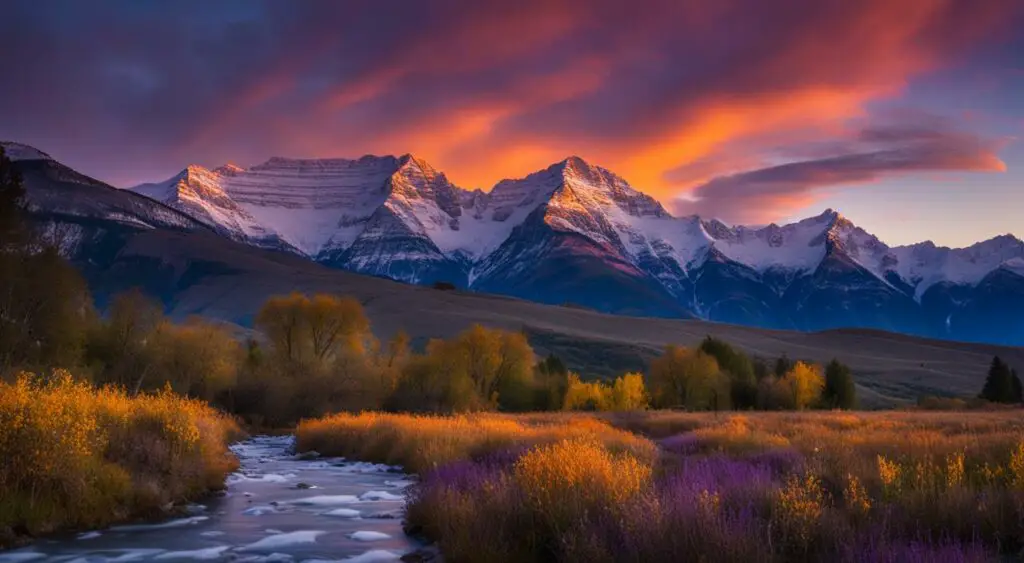
Utah’s mountain ranges offer breathtaking vistas and pristine wilderness that attract outdoor enthusiasts from around the world.
Visitors can explore a variety of trails and peaks, each offering unique experiences and challenges.
One of the most popular destinations is Mount Timpanogos, which towers over Utah County and the Salt Lake Valley.
With an elevation of 11,752 feet, Mount Timpanogos is the second-highest peak in the Wasatch Range and provides stunning views of the surrounding landscape.
Hikers and backpackers can choose from several trails, including the Timpooneke Trail, Aspen Grove Trail, and the more challenging Mount Timpanogos Summit Trail.
Each trail offers its own unique features, including wildflowers, waterfalls, and wildlife sightings.
Other popular mountain ranges in Utah include the Uinta Mountains, the highest range in Utah, and the La Sal Mountains, which offer stunning views of Moab and Arches National Park.
Nature at its Finest
Utah’s mountain ranges offer a chance to connect with nature and experience its beauty firsthand.
Visitors can explore forests, meadows, and alpine tundra, as well as observe a variety of wildlife, including moose, elk, and mountain goats.
In addition to hiking and backpacking, visitors can also enjoy skiing and snowboarding in the winter months.
Utah is home to world-class ski resorts, including Park City Mountain Resort, Deer Valley Resort, and Snowbird Ski Resort.
The Salt Lake Connection
Utah’s mountain ranges are easily accessible from Salt Lake City, making them a popular destination for both locals and visitors to the area.
The Salt Lake Valley lies at the foot of the Wasatch Range, providing stunning views of the mountains from the city.
Visitors to Salt Lake City can take advantage of the city’s many outdoor amenities, including hiking and biking trails, parks, and recreational areas.
They can also take a day trip to nearby mountain ranges for a quick getaway into nature.
Year-Round Backpacking in Utah
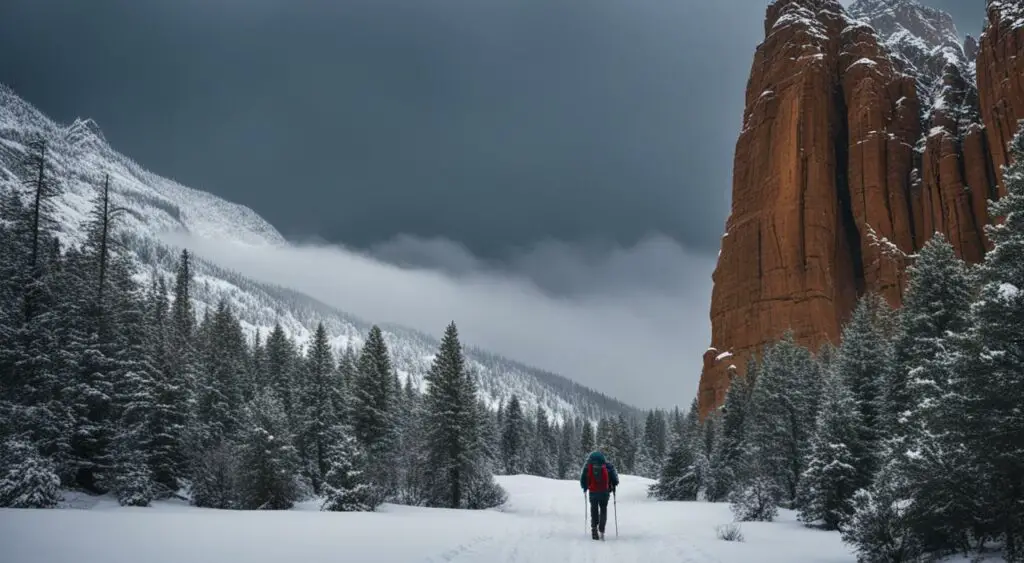
Utah offers a diverse range of backpacking experiences year-round, allowing hikers to witness the beauty of its natural splendor in different seasons.
Whether it’s hiking amid picturesque hills in the spring, or the captivating change of colors in autumn, Utah’s wilderness remains a must-see destination for any backpacking enthusiast.
If you plan to backpack in Utah during March, October, or winter, you’ll want to ensure that you select the right gear and routes for the season, as weather conditions can vary dramatically.
To help you prepare for your trip, we’ve put together some essential tips on backpacking gear and other considerations for each season:
Backpacking Utah in March
March marks the beginning of spring, and it’s an excellent time to explore Utah’s majestic landscapes.
The snow begins to melt, and the hillsides are covered with colorful wildflowers, providing a picturesque backdrop for your backpacking adventure.
To make the most of your March backpacking trip, be sure to pack the following essentials:
- Layered Clothing: Dress in layers to keep warm as the temperatures can still be cool during the mornings and evenings.
- Trekking Poles: They help to maintain balance on muddy and wet trails.
- Waterproof Gear: Pack waterproof boots, jackets, and a tent to stay dry in case of rain showers, snow, or hail.
Backpacking Utah in October
October is a beautiful time to backpack in Utah, particularly due to the fall colors that emerge across the state.
However, the weather can be unpredictable, and hikers need to be prepared. Here are some essentials to pack:
- Warm Clothing: The temperature drops significantly in October, so be sure to pack a warm jacket, sleeping bag, and socks.
- Navigation Tools: With the leaves falling off the trees, trails can be challenging to follow. Navigation tools such as a compass and GPS are critical for hikers to stay on track.
- Headlamp: Since the days are shorter in October, hikers need a reliable headlamp to navigate in the dark.
Backpacking Utah in Winter
Winter may not be the most popular season for backpacking in Utah, but it can be a rewarding experience for hikers looking for a unique adventure.
The scenery can be stunning, with snow-covered peaks and frozen lakes. However, backpackers should take the necessary precautions and pack suitable gear:
- Winter Gear: Be sure to pack winter-specific clothing and gear, including waterproof and breathable outer layers, insulated mid-layers, winter boots, and gloves.
- Tent: Consider a four-season tent that can withstand extreme weather, including winter winds and heavy snow.
- Food and Water: Ensure you carry enough food and water, as backpackers burn a lot of calories to stay warm in the cold.
“Backpacking during the winter in Utah can offer a unique and unforgettable experience, with stunning scenery and peaceful solitude.”
Utah’s natural beauty shines in every season, and with the right gear and preparation, backpackers can experience the state’s stunning scenery all year long.
Unique Backpacking Experiences in Utah’s Deserts
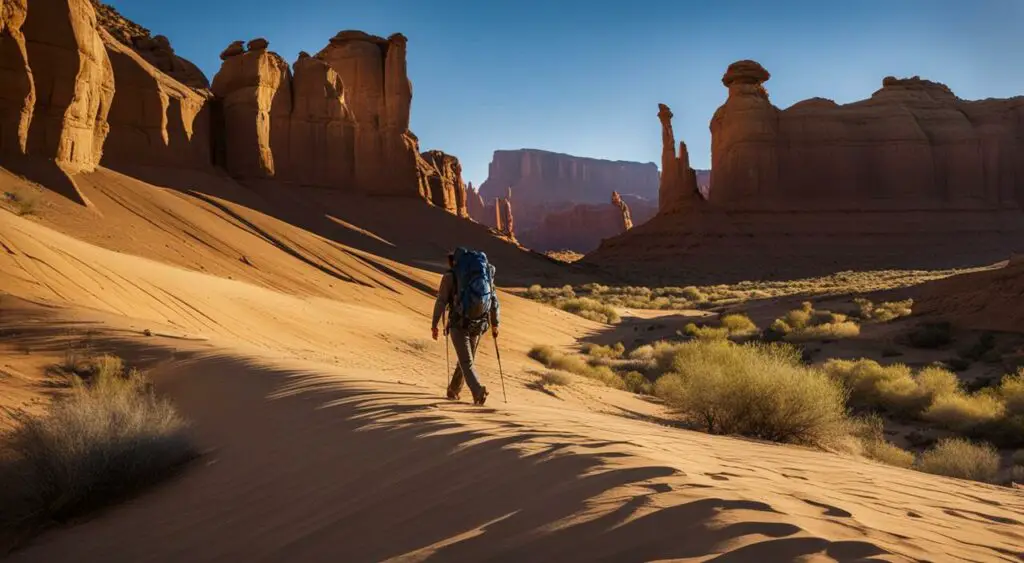
Utah’s deserts offer a truly unique backpacking experience, with breathtaking scenery and rugged terrain that will challenge even the most experienced hikers.
Backpackers can explore the vast red rock landscapes of Southern Utah or the remote wilderness of Southeast Utah, both of which boast incredible natural wonders and hidden gems.
Backpacking in Southern Utah offers a chance to explore the stunning Zion National Park, known for its towering sandstone cliffs and narrow slot canyons.
The popular Narrows hike takes visitors through a dramatic slot canyon, wading through the Virgin River and marveling at the sheer rock walls towering above.
For a more secluded adventure, backpackers can explore the Coyote Gulch, a picturesque canyon with natural arches, waterfalls, and multi-colored rock formations.
Southeast Utah is home to the iconic Arches National Park, with its vast collection of natural sandstone arches and unique rock formations.
The Devils Garden trail in the park offers a challenging hike through a landscape of towering fins and arches, while the Canyonlands National Park provides backpackers with a chance to explore the rugged canyons and mesas of the Utah desert.
Backpacking Utah’s Desert Essentials
When backpacking in Utah’s deserts, it is essential to be prepared for the unique challenges of this environment. Here are some tips to make the most of your desert backpacking adventure:
- Bring plenty of water – the desert can be hot and dry, so pack more water than you think you’ll need.
- Protect yourself from the sun – wear a hat, use sunscreen, and consider lightweight long-sleeve clothing.
- Be aware of wildlife – there are many unique desert animals, including snakes and scorpions, so it’s important to know what to do if you encounter them.
- Stay on the trail – the desert environment is fragile, so it’s important to minimize your impact by staying on designated trails.
“The desert is not a wasteland, but a treasure trove of natural wonders waiting to be explored.”
Essential Gear and Tips for Backpacking in Utah
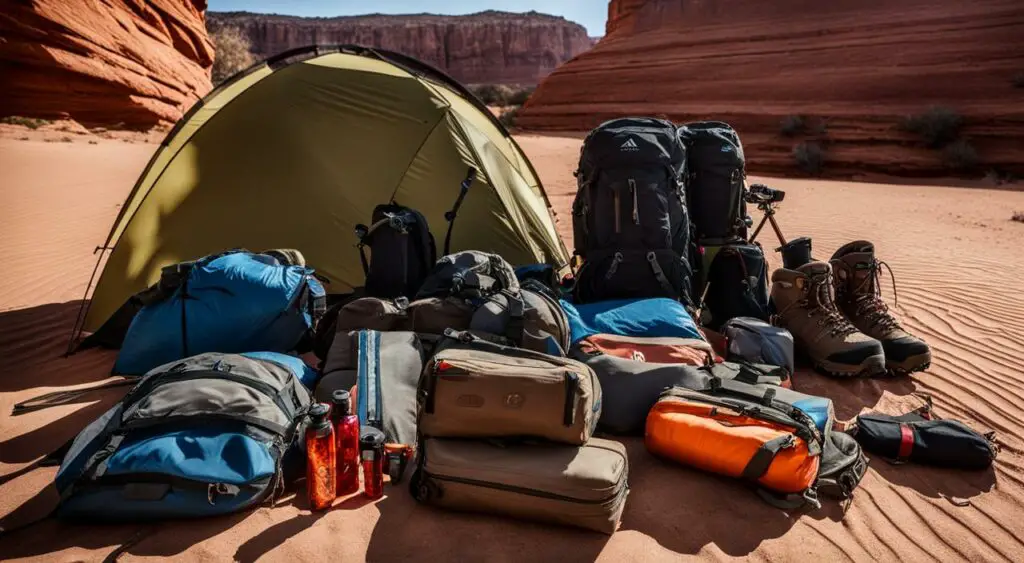
Backpacking in Utah can be an unforgettable and exhilarating experience, but it requires good planning and preparation.
Whether you are an experienced backpacker or exploring this kind of adventure for the first time, it’s important to have the right gear and knowledge to ensure a safe and enjoyable trip.
Here are some essential tips and gear recommendations for backpacking in Utah.
Planning a Backpacking Trip in Utah
Before embarking on a backpacking trip in Utah, it’s essential to plan all aspects of the trip carefully. Start by selecting a trail that matches your skill level and experience.
Look for information on permits, weather conditions, and camping regulations relevant to the trail you plan to explore.
To help you plan your backpacking trip in Utah, consider using online resources such as the official website of Utah State Parks or the Bureau of Land Management.
These websites provide valuable information on trails, permits, and regulations.
Backpacking Essentials for Utah
Here are some essential items that are necessary to bring for a safe and successful backpacking trip in Utah:
| Essentials | Recommendations |
|---|---|
| Backpack | Choose a size and style appropriate for the length of your trip and your body type. Ensure that it has a sturdy frame and comfortable straps for long hikes. |
| Tent and Sleeping Bag | Invest in a quality tent and sleeping bag designed for the conditions you will encounter. Consider the weight and size of the tent, as well as its ability to withstand high winds. Choose a sleeping bag with a temperature rating suitable for the conditions you’ll be in. |
| Water and Food | Bring enough water to last the entire trip and plan your meals carefully to ensure proper nutrition and energy. Consider bringing a water filter or purification tablets for emergencies. |
| Navigational Tools | Bring a map, compass, and GPS device to help you navigate the trails and ensure you stay on course. |
| First Aid Kit | Bring a well-stocked first aid kit that includes essentials such as bandages, antiseptic, pain relievers, and insect repellent. |
| Sun Protection | Bring hats, sunglasses, and sunscreen to protect against the strong Utah sun. |
| Clothing | Choose moisture-wicking fabrics that are comfortable and suitable for the conditions you’ll encounter. Bring layers to adjust for temperature changes and weather conditions. |
Backpacking Gear for Utah
In addition to the essentials listed above, there are additional items that can enhance your backpacking experience in Utah. Consider investing in the following gear:
- Trekking Poles: useful for steep ascents and descents, and can reduce the impact on your knees and joints.
- Camp Stove: allows you to cook warm meals and boil water while on the trail.
- Headlamp: essential for navigating camp at night or for early morning hikes.
- Bear Canister: required for some trails in Utah to protect against wildlife.
With proper planning and the right gear, backpacking in Utah can be a remarkable experience that offers adventure, natural splendor, and a sense of personal accomplishment.

Conclusion
Utah offers a wide variety of natural beauty and adventure for backpackers of all levels.
From exploring the backcountry trails to trekking through majestic mountain ranges, backpackers can experience unforgettable journeys in this unique region.
Backpacking in Utah’s National Parks, including the stunning Canyonlands National Park, is a must-do experience for any outdoor enthusiast.
Southern Utah’s breathtaking landscapes and Northern Utah’s hidden gems offer even more opportunities to explore and discover.
Year-round backpacking in Utah is possible, with specific tips and recommendations for each season.
In addition, backpackers can embark on a unique experience in the state’s deserts, such as backpacking in Southern or Southeast Utah.
Proper planning and essential gear are important for a successful backpacking trip in Utah.
By following safety tips and packing the necessary items, backpackers can ensure a comfortable and enjoyable journey.
Overall, Utah’s unparalleled natural beauty and adventure make it an ideal destination for backpackers seeking unforgettable experiences in the great outdoors.

FAQ
-
What is backpacking?
Backpacking refers to a form of outdoor recreation where individuals carry all their necessary gear and supplies in a backpack while exploring and hiking through remote and natural areas.
-
Why choose Utah for backpacking?
What is backpacking?
Backpacking refers to a form of outdoor recreation where individuals carry all their necessary gear and supplies in a backpack while exploring and hiking through remote and natural areas. -
What are the best backpacking trails in Utah?
Utah is home to numerous outstanding backpacking trails. Some popular options include The Narrows in Zion National Park, The Highline Trail in the Uinta Mountains, and the Coyote Gulch in Escalante.
-
When is the best time to go backpacking in Utah?
The best time for backpacking in Utah depends on the specific region and trail. Generally, spring and fall offer pleasant temperatures, while summer can be hot. Winter backpacking is possible but may require additional planning and specialized gear.
-
What essential gear do I need for backpacking in Utah?
Essential gear for backpacking in Utah includes a sturdy backpack, hiking boots, appropriate clothing for the weather, a tent, sleeping bag, cooking equipment, maps, a compass, a first aid kit, and ample food and water.
-
Are permits required for backpacking in Utah’s national parks?
Yes, permits are required for overnight backpacking in Utah’s national parks, such as Canyonlands and Zion. It is essential to obtain permits in advance to ensure availability and comply with park regulations.
-
Can I backpack in Utah on a budget?
Yes, backpacking in Utah can be done on a budget. By bringing your own gear, preparing your meals, and opting for free or low-cost camping options, you can minimize expenses while still enjoying the stunning natural beauty of the state.
-
What safety precautions should I take while backpacking in Utah?
Some important safety precautions include informing someone of your itinerary, carrying a map and compass, staying hydrated, being aware of weather conditions, packing proper emergency supplies, and following Leave No Trace principles to preserve the natural environment.
-
Are there guided backpacking trips available in Utah?
Yes, there are guided backpacking trips available in Utah. Various companies offer guided tours and expeditions led by experienced guides who can provide a safe and informative backpacking experience.
-
Can I bring my dog backpacking in Utah?
Some backpacking trails in Utah allow dogs, while others have restrictions. It is essential to research and check with the specific trail or park regulations to determine if dogs are permitted and if any additional requirements need to be met.
-
What are some beginner-friendly backpacking trails in Utah?
Beginner-friendly backpacking trails in Utah include the Lower Calf Creek Falls in Grand Staircase-Escalante National Monument, the Silver Lake Trail in Big Cottonwood Canyon, and the Mirror Lake Trail in the Uinta Mountains.
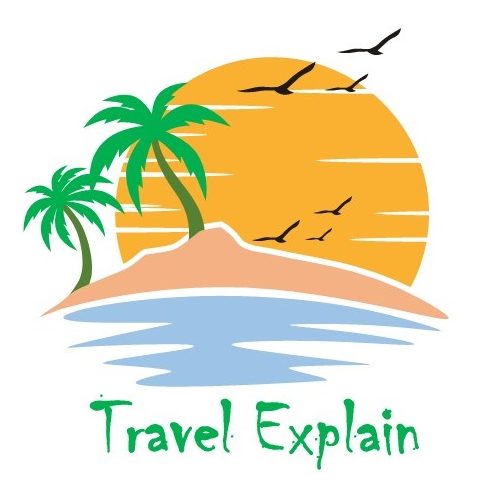
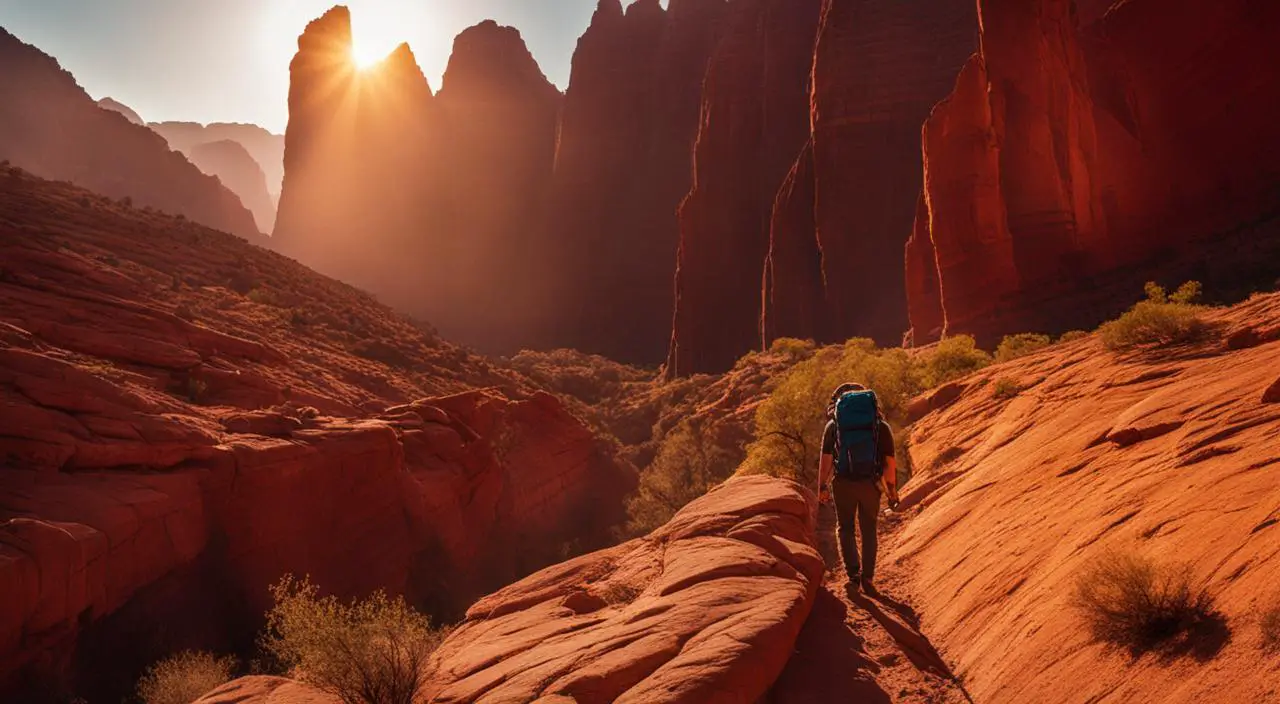

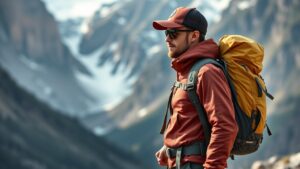
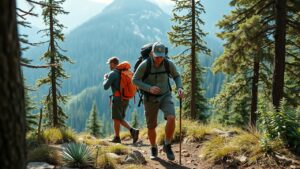
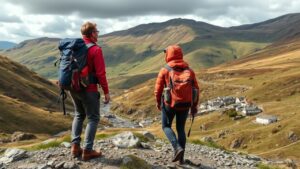
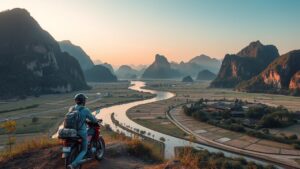
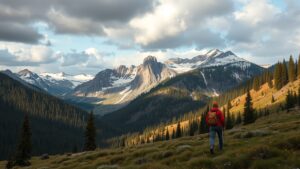

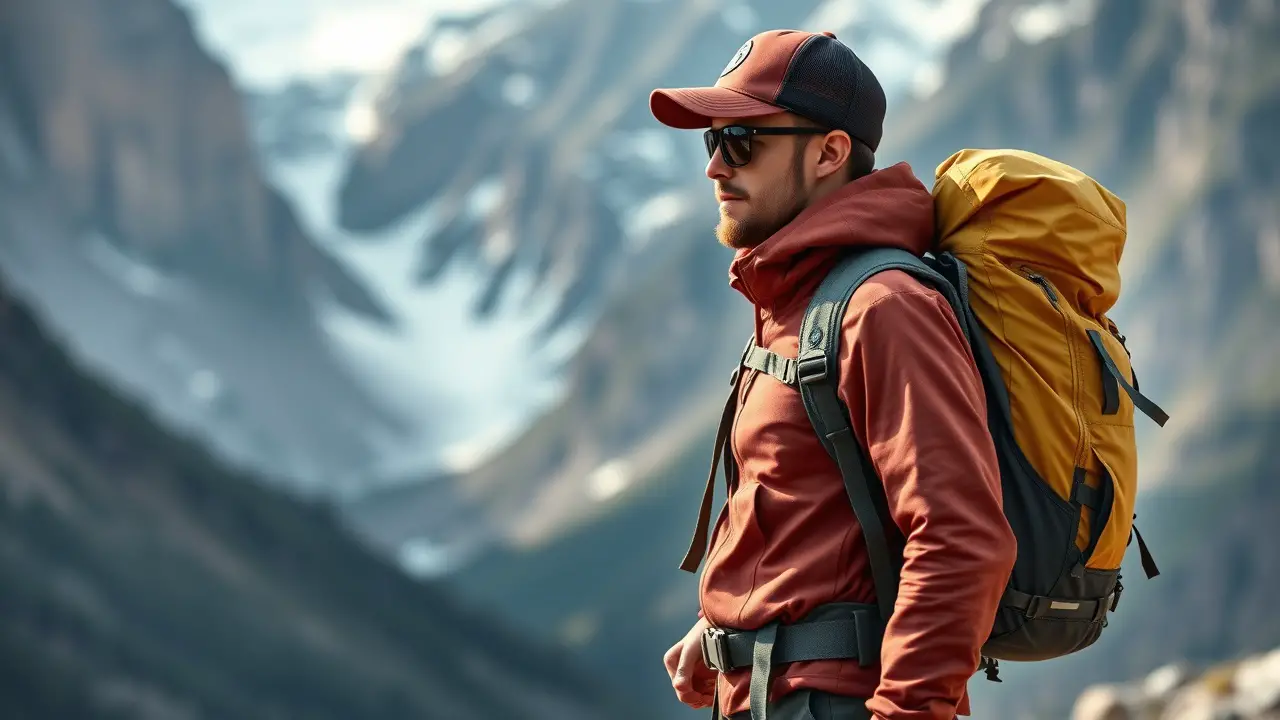
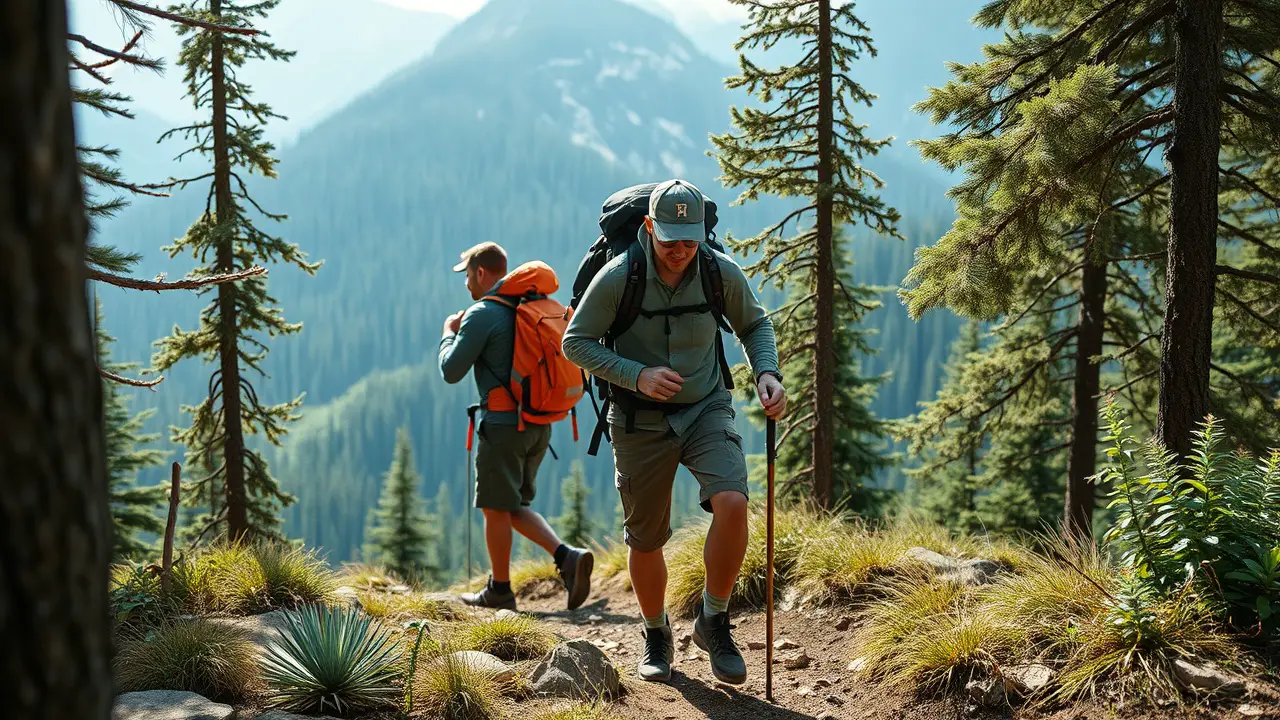
Leave a Reply